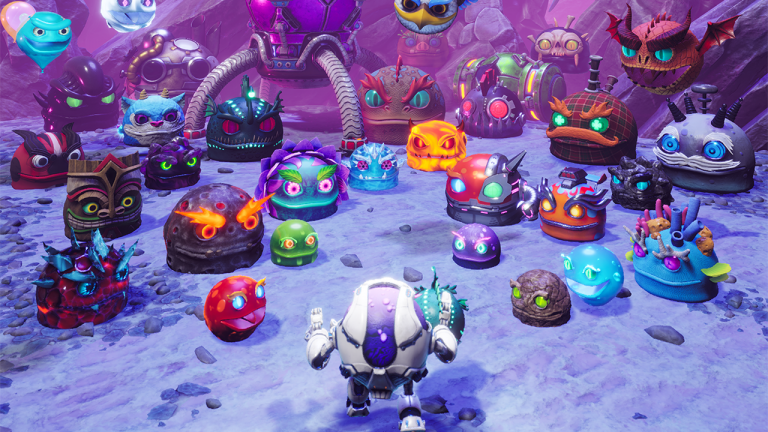Despite its relaxing pastels and quaint mountain village, Dungeons of Hinterberg is pushing against the confines of cozy games

Whether or not action RPG Dungeons of Hinterberg can be considered a cozy game is definitional. The traditional cozy game is relaxing, pastel-hued, and likely centered around quaint, repetitive gameplay that reassures and calms the player. Stardew Valley for farming; A Short Hike for strolling; Dorfromantik for tile-laying.
Hinterberg’s dungeon delving and monster slaying do break the mold a bit, but you’ll be doing both with a gentle, cartoonish art style swaddling you. And with a significant amount of the game dedicated to solving puzzles in picturesque environments, the comparison inevitably presents itself.
There’s no gore in Dungeons of Hinterberg, and the violence is stylized, taking place against gooey, inhuman mobs that feel more like the creatures from Jeff Smith’s Bone than wild animals. Protagonist Luisa spends her evenings making friends, shopping, and wandering the village. It is many ways exactly what it says on the tin: a vacation sim, where Luisa is able to relax away from the stresses of her daily life in the city. So that’s it: Open and shut cozy, right?
But development studio Microbird’s aspirations aren’t quite that simple.
“When you run into someone you don’t quite vibe with, that’s where the cozy game label might not quite apply to us,” says Philipp Seifried, cofounder of Microbird. “I feel like most cozy games pamper you in this way, where everyone is nice to you, or even if they’re not nice to you […] they’re so over the top in their grumpiness that you just laugh at them.”
Dungeons of Hinterberg doesn’t lock its characters into that simplistic of classifications. “There are a couple of characters that we expect people to not necessarily [want to] hang out with,” says Seifried, mentioning Gertrude, a rich older widow who’s disdainful of the changes made to Hinterberg since she began vacationing there as a younger woman, and Thea, a local teen whose attitude is abrasive verging on disrespectful before she warms up to Luisa.
Dungeons of Hinterberg also stretches the cozy game classification with its approach to complicated topics like tourism, professionalism, and burnout. There’s almost a metagame element to it: Luisa is trying to relax, destress and reorient herself by escaping to Hinterberg to challenge the dungeons, but life keeps getting in the way—in this case the reality of what the massive influx of unregulated tourism from the dungeons has done to Hinterberg.
“It has an effect on the place you are visiting,” says Regina Reisinger, cofounder of Microbird. “There are people who profit immensely [from the tourism] but if you are a schoolteacher your life is not necessarily going to be improved if there are hundreds of tourists to walk past each day.”
It’s a remarkably apt metaphor for cozy games as a genre, which have been criticized for the romanticization of things like agriculture, food service, and gig work. In order for a game to be cozy, the argument goes, it has to make labor or work unilaterally fun, stripping it of its real-world context and presenting an idealized version in which the inconveniences do not interrupt the experience. Dungeons of Hinterberg embraces these inconveniences, tying them into the narrative of Luisa’s vacation.
By interrupting the comfortable routine that might define a cozy game, it gives Hinterberg texture and definition—but still lets Luisa catch her breath in the woods, when she needs it. And as I dive into in my review, it balances these themes with a deft hand.
Source: www.pcgamer.com






